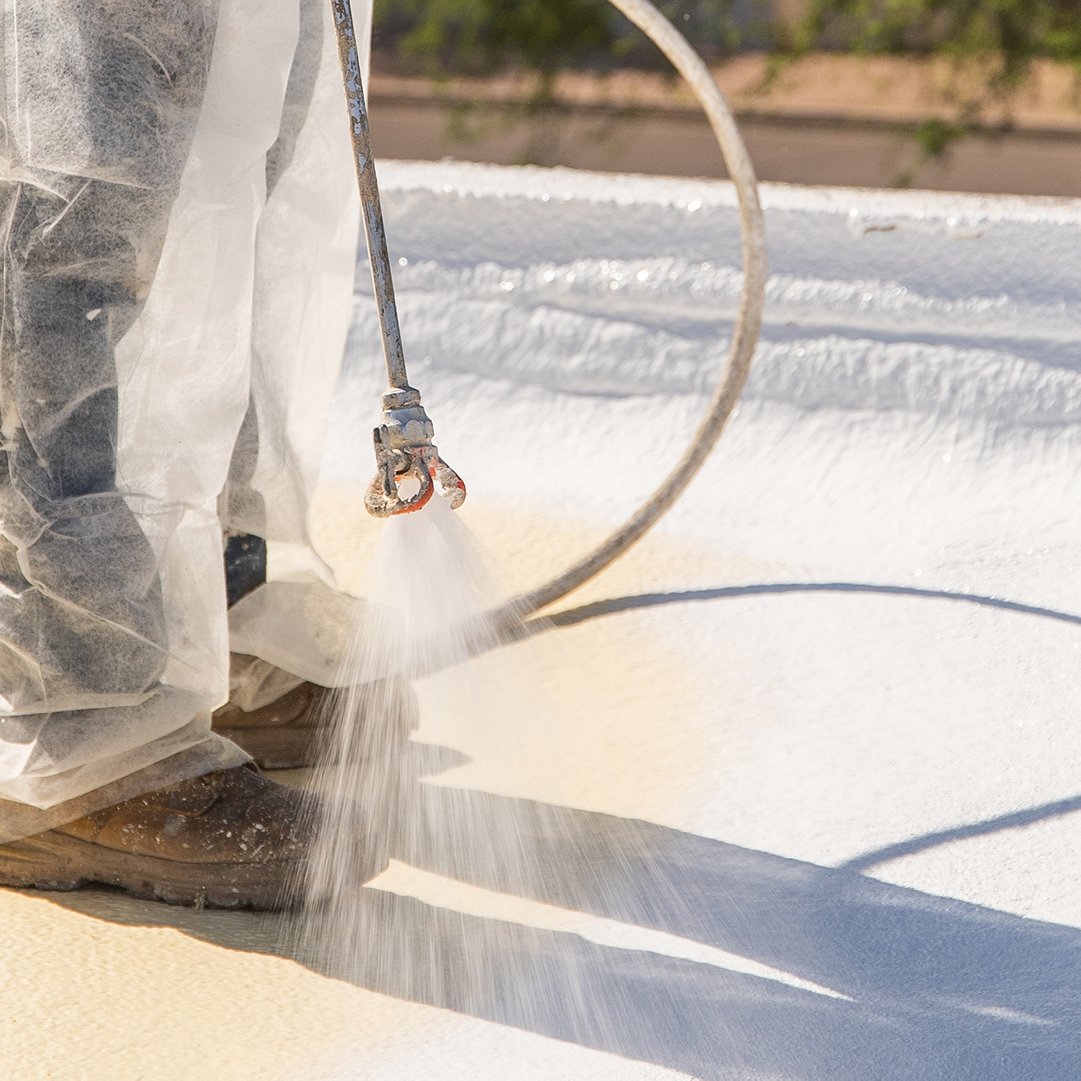WHAT YOU NEED TO KNOW ABOUT ROOF COATINGS AND SUMMER WEATHER

Summer is in full swing across most of North America. A busier season comes with warmer temps and less wet weather, particularly in the north. As your roofing season heats up, the heat can introduce several factors for elastomeric roof coatings and the contractors who apply them.
BLISTERING
Several different scenarios may introduce “blistering” to your roof coating in warm weather, and we won’t explore all of them in this post. However, we will dive into a common cause of blistering in the summer months.
Blistering often surprises roofing applicators because, without diligence in the application process, their exact cause can be unknown. Understanding blisters is the first step in preventing them.
Blisters occur when there is a localized loss of adhesion between the roof coating and the surface being applied. The roof coating lifts from the underlying surface in the form of bubbles.
The most common culprit of blistering is moisture, either in the form of water or moisture vapor. The blisters themselves can be filled with either water or air/vapor.
In the summer months, blistering can happen quickly from applicators’ drops of sweat on or into the material as it is applied or from condensation on drink bottles being consumed while near/on top of the material. It is an innocent, easy-to-make mistake that can cause tons of headaches.
MUD CRACKING OR ALLIGATOR SKIN
If you’ve been in this business long, you’ve likely seen “alligator skin” or “mud cracking.”. This phenomenon earns its name of the alligator-like pattern of cracking on the material’s surface. Mud cracking can occur across several roof coatings and paints, and the causes can vary.
When waterborne coatings are applied to a scorching substrate surface, or when ambient conditions are sweltering and dry, the rapid dry time of the material can cause shrinkage and cracking, as seen in the photo above. Inexperienced applicators on your crew may be tempted to apply more material to fill in the cracks quickly or apply a heavy initial coat, but this may only compound the issue.
OTHER TEMPERATURE CONSIDERATIONS
Besides safety considerations in the hot weather, consider the other ways the summer weather will affect your application.
Most elastomeric roof coatings, including Rugged Silicone or Acrylic Coatings, will be dry to the touch and safe to walk on within 8-24 hours after applications. However, hot and dry conditions may significantly reduce that time to just a few hours. Humidity can elongate that period, however.
You should also consider any moisture from humidity on the substrate surface itself. Moisture and humidity can affect the adhesion to the surface, so it’s best to apply when there has been no rain for at least two days prior. Remember, moisture in the summer comes in many forms: fog, dew, and rain. Check your relative humidity! If the relative humidity exceeds 85%, you’ll likely experience application issues.
Typical applications should aim for a substrate temperature between 45°-120°F (7°- 49°C) and not exceed 180°F (82°C).
While summer weather allows many roofers to crank out quite a few jobs, some diligence will prevent costly callbacks when fall showers and wet winter weather hits.
Give our team a call if you’re experiencing any of these issues (or any other issues) with your current roof coating. You deserve an available product with a service team that gives you an actual human to talk to. That’s Rugged Coatings. We have a supply chain you can trust and excellent customer service to help you with any issues you’re experiencing in the field. Use a product that gives you and your clients confidence! Give us a call today!


